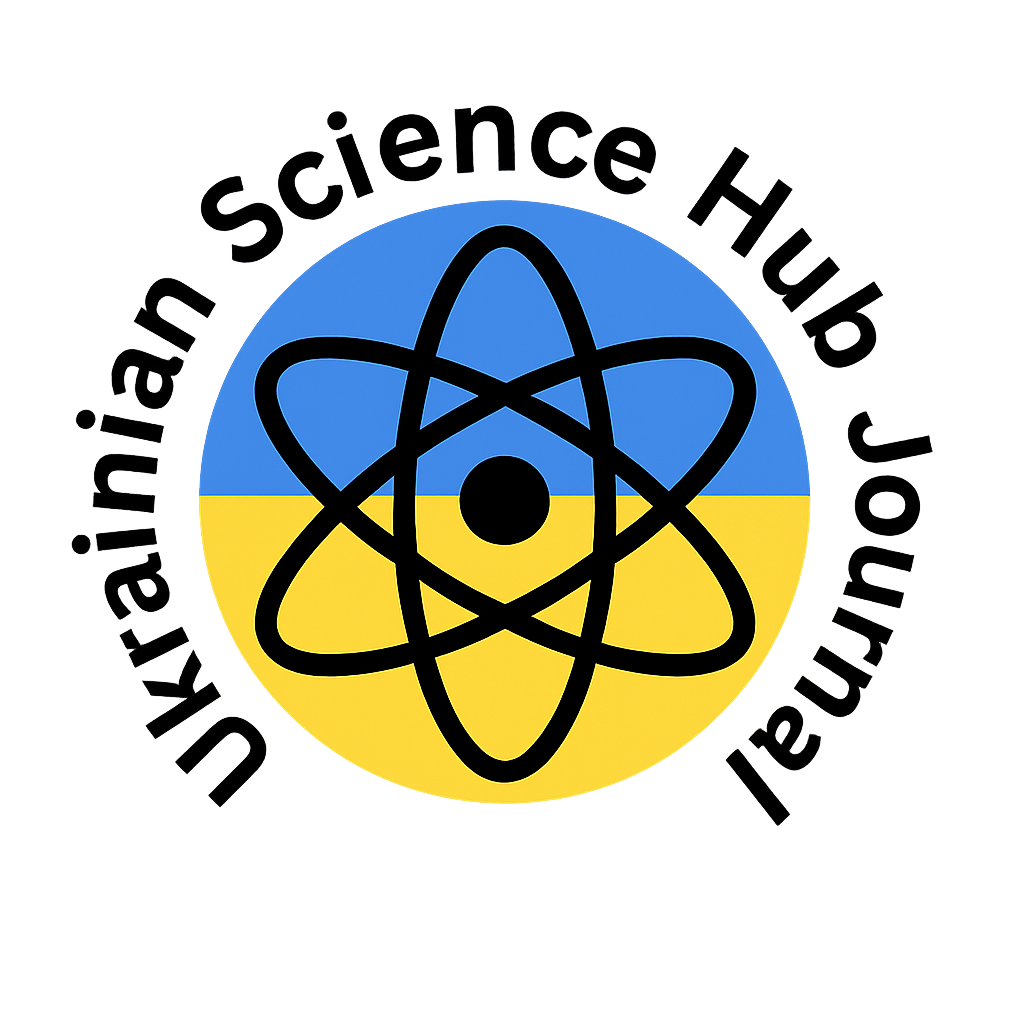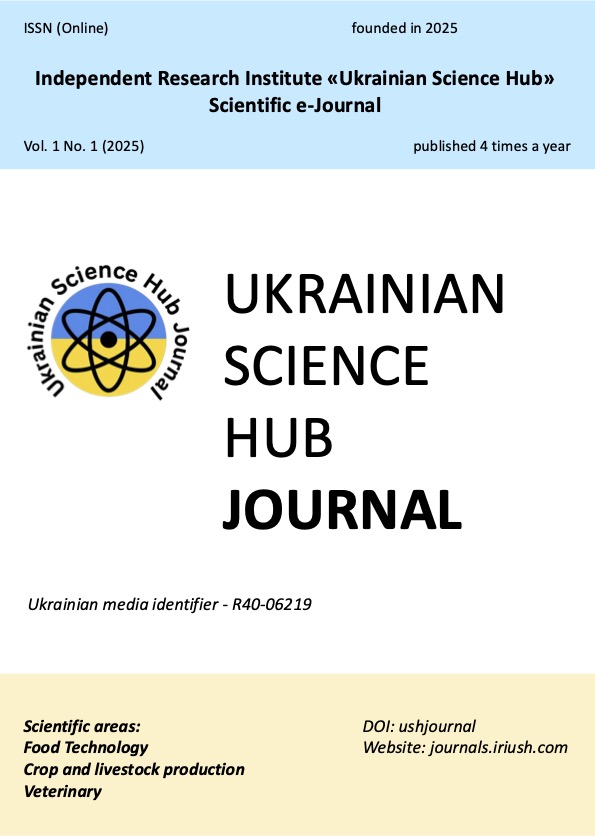ПОРІВНЯННЯ МІЖНАРОДНИХ ВИМОГ ДО ЯКОСТІ ТА БЕЗПЕЧНОСТІ ПРОДУКТІВ БДЖІЛЬНИЦТВА
DOI:
https://doi.org/10.64378/iriush.journals.2025.1.1Ключові слова:
мед, прополіс, бджолине обніжжя, харчові продукти, нормативне регулюванняАнотація
Нормативні вимоги до продовольчої сировини та харчових продуктів є у більшості країн світу, але часто на один і той самий продукт вимоги в різних країнах можуть не співпадати. Це є проблемою під час міжнародної торгівлі, експорту чи імпорту продовольства. Для можливості застосовувати одинакові та спільні стандарти була створена міжнародна організація зі стандартизації ISO, яка розробляє міжнародні стандарти та вимоги в різних сферах життєдіяльності людини. Водночас у багатьох країнах залишаються свої національні стандарти. У статті здійснено порівняльний аналіз міжнародних та національних нормативних вимог до основних продуктів бджільництва — меду, бджолиного обніжжя та прополісу — з метою визначення їхньої відповідності сучасним критеріям якості та безпечності для подальшого використання у виробництві харчових продуктів. Було проаналізовано міжнародні стандарти та нормативні вимоги, а також стандарти Польщі, України, Швейцарії, Бразилії та Європейського Союзу. Встановлено, що найсуворіші вимоги до меду за вмістом вологи (не більше 18,5% для вищого ґатунку) та діастазного числа (не менше 8) містяться у ДСТУ 4497. Для бджолиного обніжжя ДСТУ 3127 встановлює максимальну вологість 10% і вміст протеїну не менше 22%, що перевищує мінімальні показники ISO. Вимоги до прополісу в ДСТУ 4662 передбачають не більше 15% воску та не більше 5% зольності, а також граничний вміст оксидованих речовин — щонайменше 0,6 см³ на 1 мг прополісу. Щодо показників безпеки, українські стандарти передбачають найнижчі допустимі рівні важких металів: свинець (≤0,1 мг/кг), кадмій (≤0,05 мг/кг), ртуть (≤0,03 мг/кг), та забороняють наявність сторонніх домішок і патогенних мікроорганізмів. Регламент Європейського Союзу є одним з тих документів на вимоги якого посилаються під час ввезення меду на його територію, що вимагає обов’язкову відповідність встановленим показникам. Також є деякі фізико-хімічні показники та показники безпеки, які не враховуються у тих чи інших країнах або навпаки, ними передбачаються, а не враховуються міжнародними стандартами. Враховуючи підсумки проведеного дослідження встановлено, що за дотримання мінімальних вимог міжнародних стандартів, нормативних вимог Європейського Союзу або України, продукція бджільництва буде безпечною та придатною до використання, як сировина у виробництві харчових продуктів. Результати дослідження можуть бути використані виробниками, експортерами та технологами для обґрунтованого вибору сировини з урахуванням специфіки нормативних вимог різних країн і регіонів, а також для розроблення харчових продуктів з додаванням продуктів бджільництва.Посилання
Adamchuk L. O., Silonova N. B., Sukhenko V. Yu., Pylypko K. V. (2020). Normatyvne rehuliuvannia pokaznykiv bezpechnosti ta yakosti medu. [Normative regulation of honey safety and quality indicators]. Animal science and food technology, 11, 4. https://doi.org/10.31548/animal2020.04.005
Adamchuk, L., Dudchenko, N., Hengalo, N., Lisohurska, D., & Pylypko, K. (2021). Characteristics of Ukrainian honeydew honeys. Food Resources, 9(16), 6–19. https://doi.org/10.31073/foodresources2021-16-01
Antoniv, A. (2024). Improvement of meat snack technology with the addition of beekeeping products [Dissertation for the Doctor of Philosophy, National University of Life and Environmental Sciences of Ukraine]. https://nubip.edu.ua/sites/default/files/u145/dis_antoniv.pdf
Barabash, A. V., & Shtonda, O. A. (2022). Honey in marinades for meat semi-finished products. In Scientific achievements in solving actual problems of raw material production and processing, standardization, and food safety: Proceedings of the XI International Scientific and Practical Conference of Scientists, Postgraduates and Students (pp. 157–158). Kyiv: Publishing Department of NULES of Ukraine.
Bilotserkivets, T. I., Hengalo, N. O., Mykhalska, O. M., & Adamchuk, L. O. (2015). Evaluation of honey based on quality indicators in accordance with current regulations. Scientific Bulletin of the National University of Life and Environmental Sciences of Ukraine. Series: Technology of Production and Processing of Livestock Products, (223), 52–57.
Canadian Grade Compendium: Volume 6 – Honey, 2021. Retrieved from https://inspection.canada.ca/en/about-cfia/acts-and-regulations/list-acts-and-regulations/documents-incorporated-reference/canadian-grade-compendium-volume-6/
Chechitko, V., Antoniv, A., & Adamchuk, L. (2024). Analytical review of the market of raw materials and innovative technologies of health-improving food products of plant origin. Scientific Journal'Animal Science & Food Technologies', 15(3).
Chumak, R. V., & Yudicheva, O. P. (2016). Methods of natural honey adulteration. In Current Issues of Theory and Practice of Commodity Expertise: Proceedings of the III International Scientific and Practical Internet Conference (pp. 315–318). Poltava: PUET.
Codex Alimentarius Commission. (2001). Revised Codex Standard for honey. Codex STAN 12-1981.
Dontsova, I. V., & Lebedynets, V. T. (2020). Animal-origin food raw materials: classification, properties and use. Bulletin of Lviv University of Trade and Economics. Technical Sciences, (23), 121–127.
Drozhzhyn D. Yu. Zakharchuk, D. M. (2023) Peculiarities of regulatory regulation of the quality and safety of bee honey in the perspective of comparison: Ukraine and the international trade space. Current issues, problems and prospects for the development of science and education, 43.
DSTU 4497:2005 (2007). Natural honey. Specifications. Kyiv: State Consumer Standard of Ukraine.
DSTU 4662:2006 “Propolis (Bee Glue). Specifications”. (2007). Kyiv: State Standards of Ukraine.
Etkalo, A. A., Lysenko, H. L., & Leppa, A. L. (2024). Craft production of animal-origin products in Ukraine. Retrieved from https://repo.btu.kharkiv.ua/server/api/core/bitstreams/bb09feb7-cf42-457b-8e82-5a42f52ef76b/content
European Honey Directive 2001/110/EC. (2001). Relating to Honey.
Ferreiro-González M et al. (2018). Rapid quantification of honey adulteration by visible-near infrared spectroscopy combined with chemometrics. Talanta, 188, 288–292. DOI:10.1016/j.talanta.2018.05.095.
García, N. L. (2018). The Current Situation on the International Honey Market. Bee World, 1–6.
Hospital, X. F., Hierro, E., Martín-Cabrejas, I., Caballero, N., Jiménez, B., Sánchez-Martín, V., ... & Fernández, M. (2024). Bee products as an alternative for the preservation of nitrate and nitrite-reduced dry fermented sausages. Food Bioscience, 59, 104048.
ISO/CD 24381 “Bee Propolis – Specifications”. Retrieved from https://www.iso.org/standard/78543.html.
Jaśkiewicz, K., & Szczęsna, T. (2025). Quality and Safety Assessment of Honey Imported from Ukraine to Poland: Physicochemical and Residue Analysis. Journal of Apicultural Science, 69(1), 1-16.
Kotelevych, V. A., Huralska, S. V., & Honcharenko, V. V. (2024). Veterinary and sanitary assessment of honey and other beekeeping products according to quality and safety indicators. Bulletin of Sumy National Agrarian University. The series: Livestock, (1), 48-58.
Koval, S. Yu., & Rossokha, V. V. (2022). Theoretical approaches to determining the essence of management of control systems and quality of beekeeping products. Economic Bulletin of Donbas No. 1(67). https://doi.org/10.12958/1817-3772-2022-1(67)-41-51.
Lazarieva, L. M., Kovtun, V. A., & Shtanhret, L. I. (2015). Analysis of honey quality indicators in the western region of Ukraine. Veterinary Medicine, (101), 57–59.
Ministry of Agrarian Policy and Food of Ukraine. (2019). Order No. 330 “On approval of the Requirements for honey”. https://zakon.rada.gov.ua/laws/show/z0725-19#Text
Mylostyva, D. F. (2024). Detection of honey adulteration. In Current Issues of Commodity Science, Biotechnology, Expertise and Customs: Proceedings of the International Scientific and Practical Internet Conference (pp. 97–99). Poltava: PUET.
National Standards of People’s Republic of China GB 16740-2014. (2015). National Food Safety Standards Honey.
Nogueira, C., Iglesias, A., Feás, X., & Estevinho, L. M. (2012). Commercial Bee Pollen with Different Geographical Origins: A Comprehensive Approach. International Journal of Molecular Sciences, 13(9), 11173-11187. https://doi.org/10.3390/ijms130911173.
Normative Instruction No. 11 Annex VII. Regulation of Identity and Quality of Propolis Extract. (2000, October).
Novhorodska, N. V. (2024). Use of bee products in the meat industry. All-Ukrainian Scientific and Practical Conference: "Sustainable Relations of Food Quality and Safety Criteria", May 16, 2024. Bila Tserkva.
Official Gazette of 10/23/00, 16-17. Department of Inspection of Products of Animal Origin – DIPOA.
Pambuk, S. A., Martirosyan, I. A., & Kruglyak, Yu. O. (2019). Ways to harmonize Ukrainian and international requirements for honey quality. Commodity Bulletin, (12), 37-48.
Polish standard “Propolis – kit pszczeli PN-R-78891”. (1996). Polish Committee for Standardisation. SKN 1552 ICS 65.140.10.
Reybroeck, W. (2014). Quality control of honey and bee products. In Beekeeping for poverty alleviation and livelihood security (pp. 481-506). Springer, Dordrecht.
Shtonda, O., Kulyk, V., & Semeniuk, K. (2023). Application of beekeeping products in the technology of raw smoked sausages. Animal Science and Food Technology, 14(3), 86-98. https://doi.org/10.31548/animal.3.2023.86.
Sukhenko, Y., Shtonda, O., Soldatov, D., & Sukhenko, V. (2021). Extension of shelf life of semi-smoked Krakivska sausages through treatment with aqueous propolis extract from “Pcheloproduct” LLC. Food Resources, 9(17), 157–164. https://doi.org/10.31073/foodresources2021-17-16
Susol, N., & Prystavska, N. (2023). Assessment of the level of vulnerability of natural honey to falsification. Proceedings of the scientific and practical online conference "Food safety and quality in the concept of "One Health"" (Lviv, June 1–2, 2023). https://nvlvet.com.ua/index.php/conferences/article/view/4832.
Thrasyvoulou, A., Tananaki, C., Goras, G., Karazafiris, E., Dimou, M., Liolios, V., ... & Gounari, S. (2018). Legislation of honey criteria and standards. Journal of Apicultural Research, 57(1), 88-96. https://doi.org/10.1080/00218839.2017.1411181
Ulmer, M., Smetana, S., & Heinz, V. (2020). Utilizing honeybee drone brood as a protein source for food products: Life cycle assessment of apiculture in Germany. Resources, Conservation and Recycling, 154, 104576.
United States Pharmacopeia. (2018). Food fraud database.
Végh, R., Csóka, M., Sörös, C., & Sipos, L. (2024). Underexplored food safety hazards of beekeeping products: Key knowledge gaps and suggestions for future research. Comprehensive Reviews in Food Science and Food Safety, 23(5), e13404.
Завантаження
Опубліковано
Номер
Розділ
Ліцензія

Ця робота ліцензується відповідно до ліцензії Creative Commons Attribution-NonCommercial-ShareAlike 4.0 International License.


